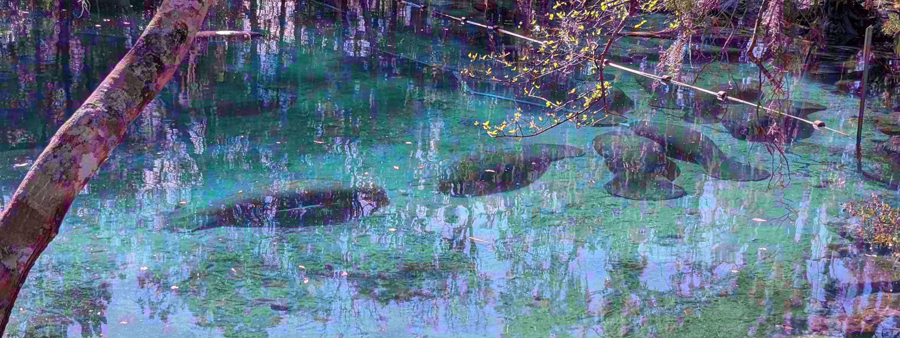I spend six months of the year living in Florida and have fallen in love with the manatees. I often paddle my kayak in the canals and bays off the Intercoastal waterway and had a recent encounter with a juvenile manatee. Manatees are known for their curious and playful nature, and this adolescent manatee certainly met that criterion as it surfaced next to my kayak to get a good look at me!
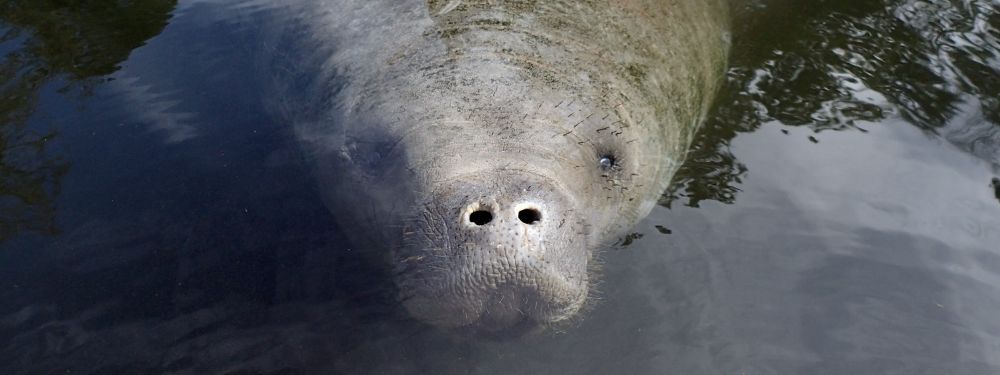
Manatees, known to many as “Gentle Giants,” top off at between 800-1200 pounds, grow to 10-12 feet in length, and are a distant relation to the elephant. There are three species of manatee: the West Indian (Florida), the West African, and the Amazonian. Sometimes Dugongs are mistaken to be a manatee species, but technically they are considered to be cousins of manatees as they are strictly marine mammals (manatees use both salt and fresh water) and have a fluke-like tail similar to that of a dolphin.
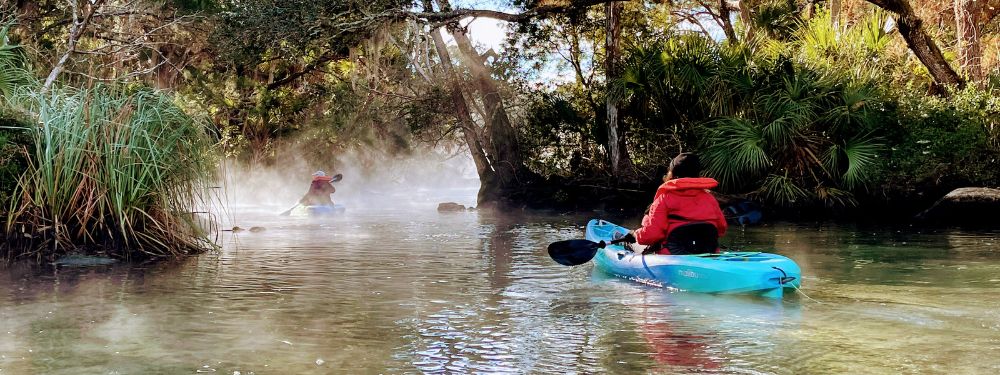
Florida manatees, which are a sub-species of the West Indian manatee are concentrated in Florida, but as migrating mammals are found as far north as Massachusetts and as far west as Texas. Manatees congregate in coastal areas as well as shallow, slow-moving rivers, estuaries, saltwater bays, and canals, particularly where seagrass beds and freshwater vegetation flourish. During the winter months, when coastal waters drop below 68 degrees, manatees seek warmer water and move to freshwater springs and power plants where warm water is released. Contrary to popular though, manatees do not have a lot of fat, and therefore they need to maintain body temperature by moving to warmer waters to avoid cold water stress syndrome, which can be deadly for a manatee.
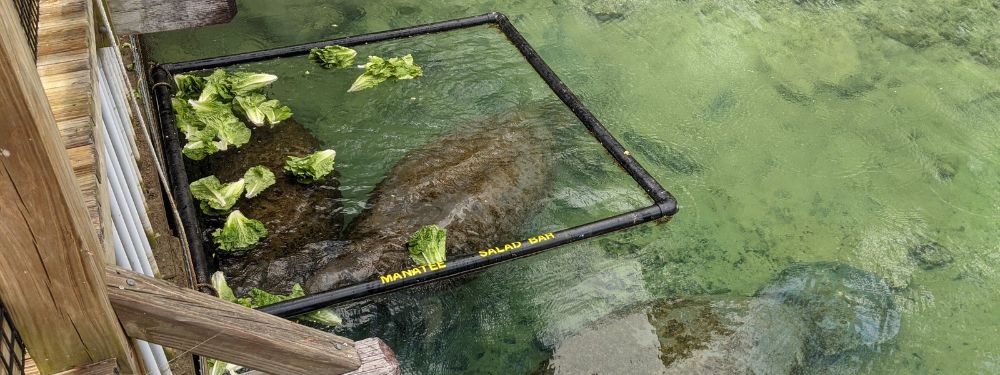
Some interesting facts about manatees include:
-
Manatees spend up to eight hours per day searching for food. They consume 4-9% of their body weight daily.
-
Manatees go to the surface of the water every three to five minutes to breathe, but they can remain underwater longer, holding their breath for up to 20 minutes. When they do take a breath, 90 percent of the air in their lungs is replaced (whereas humans tend to replace about 10 percent).
-
Manatees can swim up to 20 mph, but do so rarely and typically move at 3-5 mph when swimming.
-
Female manatees typically have one calf every two to five years. Calves will stay with the mother and nurse for up to two years.
-
Manatees may live over 65 years in captivity, but of those wild manatees that reach adulthood (around 3 to 7 years after birth), only half survive to their early 20s.
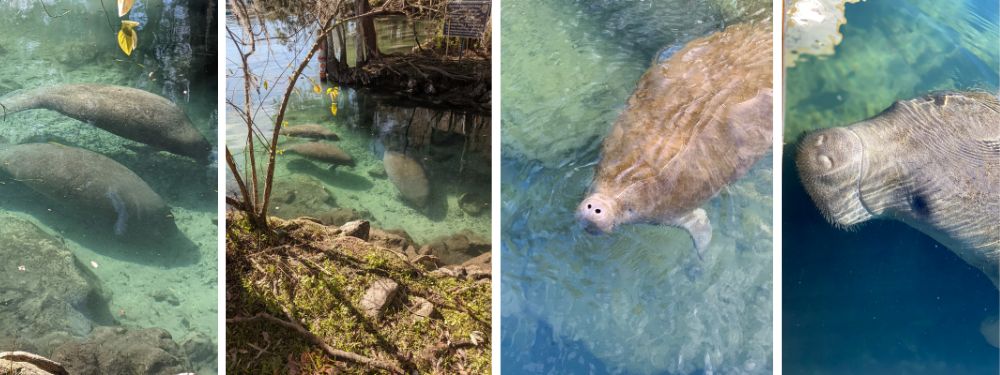
In 2021, Florida saw the highest number of manatee deaths in more than 45 years, with nearly 1,000 deaths. Considering there are about 13,000 manatees worldwide and about 6,500 West Indian manatees alive, the number of deaths in recent years is alarming. As of October 15, 2022 the death count for the Florida manatee stood at 717. Twenty percent of these deaths were attributed to boat strikes while the remainder were mostly due to a lack of seagrass which is the main food source for manatees. Seagrass die-off is caused by pollution and red tides along the coast. As the Florida coastline continues to be over-developed, human impact and pollution can only continue to cause major challenges for our manatees.
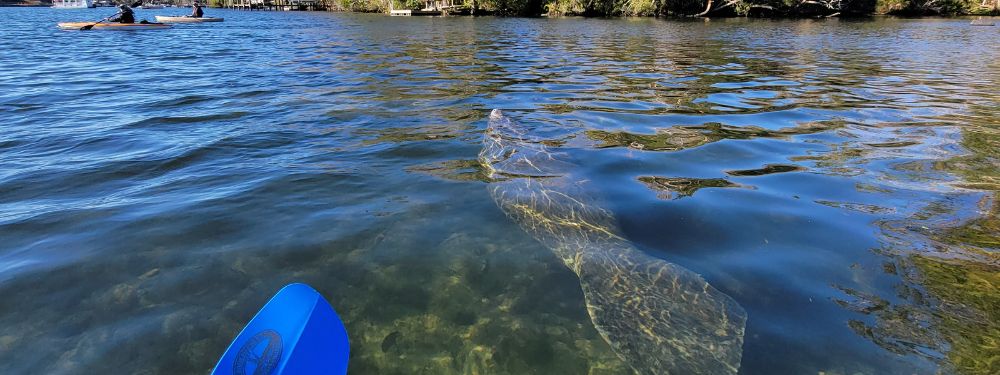
West Indian manatees are listed as threatened under the Endangered Species Act of 1973 and protected under federal law by the Marine Mammal Protection Act of 1972, which makes it illegal to harass, hunt, capture, or kill them. They are also protected by the Florida Manatee Sanctuary Act of 1978. Violations can be met with civil and/or criminal penalties, monetary fines of up to $100,000, and/or imprisonment for up to one year.
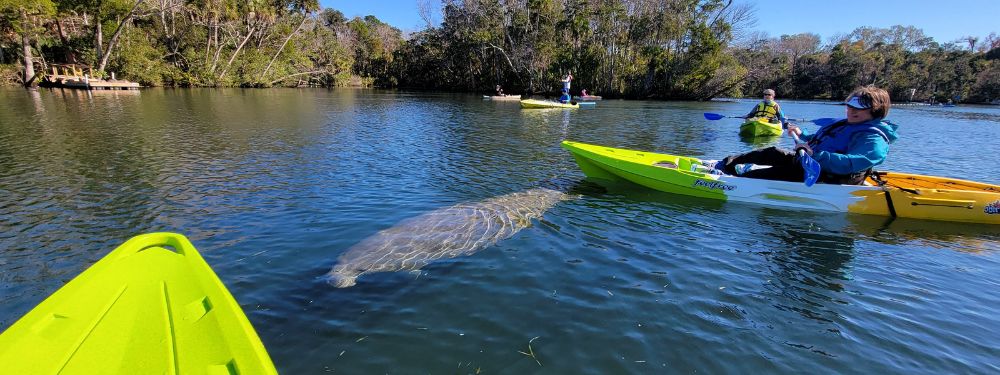
At AGC, we respect the manatees and educate our participants to observe the manatees in a non-threatening manner. We do not touch the manatees, even when they may come up to our kayaks, as we do not want to habituate them to humans. If manatees become accustomed to being around people, they can alter their behavior in the wild, perhaps causing them to lose their natural fear of boats and humans, which may make them more susceptible to harm.
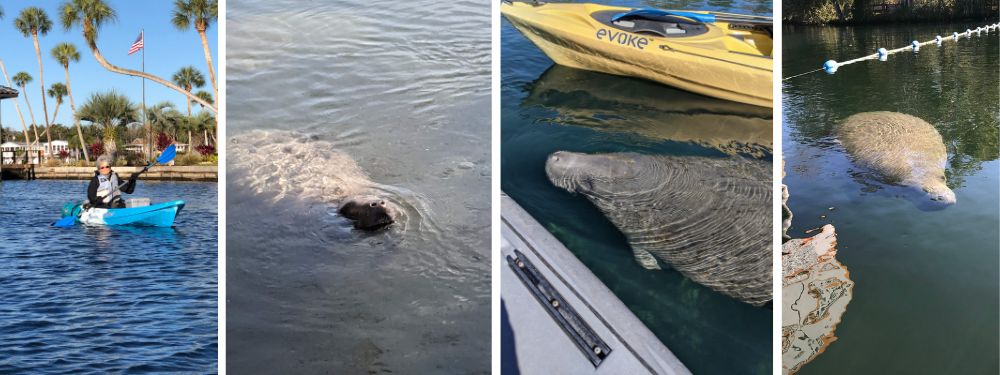
The focus of our trip is to observe manatees in their environment without causing a negative impact and in turn, to better understand the challenges these manatees face and what each of us can do to help our Florida manatees survive, and hopefully thrive.
Going on a tour is a fun way to learn about manatees from an experienced guide. Whether you're traveling with AGC, another tour group, or family and friends, it's important to keep in mind "manatee manners" while spending any amount of time in a manatee habitat.
When choosing a tour, ask your guide if they practice passive observation or maintain minimum distances around the manatees. AGC guides take many steps to ensure our groups are following manatee-viewing best practices. The experience and education AGC guides deliver are important components of manatee conservation.
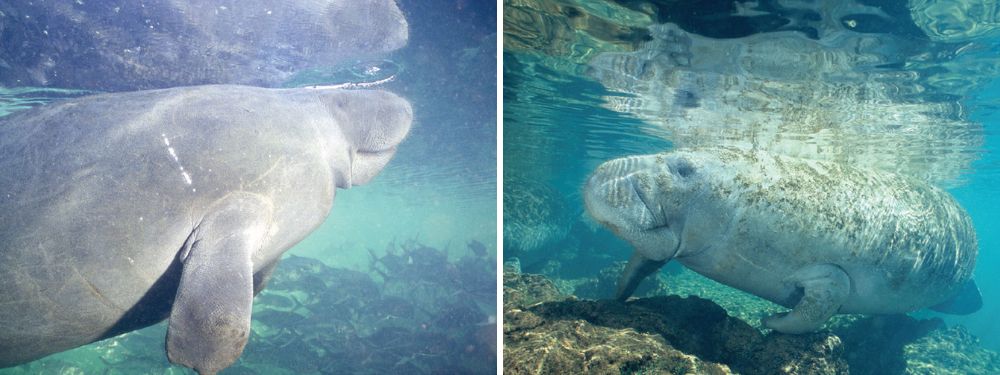
Meet Ariel and Betsy!
Adventures in Good Company is now an official adoptive parent of Ariel and Betsy, two imperiled West Indian Manatees, located in Homosassa Springs Wildlife State Park.
Thanks to an influx of recent registrations for our upcoming Paddling with Manatees trips, we were able to donate $100 per registration to Save the Manatee Club, putting us at a total of $1,000 in donations!
Located at the Ellie Schiller Homosassa Springs Wildlife State Park in Homosassa, Florida is a manatee adoption program near and dear to our hearts. The park is a rehabilitation facility for manatees who are recovering from injuries before being released back into the wild. Manatees who cannot be released into the wild because of injuries or other life-threatening reasons currently call the park their home.
Support for These Adoption Programs:
- Fund manatee rescue, rehabilitation, and research efforts in the U.S. and the Wider Caribbean
- Support manatee education and public awareness projects
- Protect manatees and their habitat through advocacy and legal action
References:
Florida Fish and Wildlife Conservation Commission
Save the Manatees Organization
The Everglades Foundation

